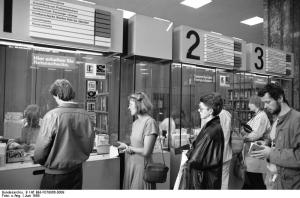Early Adopters have been referred to as the rare breed of people who have the insight to match emerging technology to a strategic opportunity. What does your mental picture of this visionary person look like? I doubt it is a single mother earning under $30k per year with no college education. Yet that is what the data tells us about early adopters of digital financial services in the U.S. The contrast is stark when you think about the profile of early adopters of internet technology; they are what you would expect: men, especially young, white, educated, and fairly affluent. One high-income early-adopter talked about how information and influence are his driving factors in gaining the newest technology. They want a breakthrough and are the least price sensitive, writes Geoffrey Moore in his book Crossing the Chasm. This is not true of low-income early adopters; so what is driving them to make the jump to digital financial services? They are motivated by their need for a technology that allows them to optimize two things they don’t tend to have a lot of: time and access. The convenience of alternative online banking services eliminates the need to commute to a physical bank just to execute simple financial transactions, as well as the high fees charged by retail banks. But the resources that exist to guide them through their financial lives are disconnected from their day-to-day problems.
Innovative banking services–whether reloadable prepaid accounts or new mobile banking apps–are becoming available to the U.S. market, and it is surprising that the demographic among the first to adopt alternative online banking services has been African American mothers with no college and incomes below $30k. And Hispanic consumers are adopting smartphones at a higher rate than any other demographic group. A report in 2007 found that cell phone users are more likely to be found in groups that have generally lagged in internet adoption, such as senior citizens, blacks, and Latinos. A study in 2013 showed that 74% of African American cell phone owners are also cell internet users, as are 68% of Hispanic cell owners. In fact, 45% of cell internet users living in households with an annual income of less than $30k mostly use their phone to go online–rather than some other device such as a desktop or laptop computer, compared with only 27% of those living in households with an annual income of $75k or more. In fact, Latinos rely significantly more on their smartphones for digital access: they are more likely to bank online, check a balance, and download an app than any other demographic group. “Hispanic consumers are not only the fastest-growing demographic in the U.S., they’re also trendsetters in digital, leading the growth in device ownership and online usage” (Nielsen Digital Consumer Report 2014). But Hispanic consumers are also particularly likely to be underserved by the financial services industry. “Adoption of electronic banking services are typically motivated by goal achievement or rewards” (International Journal of Bank Marketing); and the rewards they are seeking are solutions to very tangible problems. However, the existing mobile banking apps with feature-rich designs can overwhelm users with information, demand for prioritization, and a focus on cash flows and scarcity. Services should be user-friendly–not just for those who have had previous experience with electronic systems. There is a great need for clear, timely, present-centered guidance in moving these users through their financial lives.
While low-income early adopters are visionaries in that they are opening mobile bank accounts, there are very high dormancy rates of these accounts. A study done by the International Review of Social Sciences on the barriers and adoption triggers of mobile banking services revealed that the use of these services is much lower than expected in both developed and developing countries. Why is mobile–such a simple and popular device–still underused for accessing banking services? The reasons are myriad. But there is an overall consumer perception that the use of these services is expensive, risky, and relatively complex to use, and relative advantage is questionable. Researchers found that adoption and usage of mobile banking will largely depend upon customers’ perception of its ease of use and usefulness. There is a need for a bridge between financial institutions and their customers to dispel the fears and false perceptions customers often have about digital financial services. Through short and simple messages sent directly to your phone, Juntos builds trust in the ease of use and usefulness of mobile banking. We offer a solution to not only help people feel confident to adopt mobile banking services, but also empowered to continue to use their accounts. Juntos is intimately connected to the day-to-day financial burdens facing our users and the challenge of using unfamiliar technologies and new financial products to ease those burdens.

